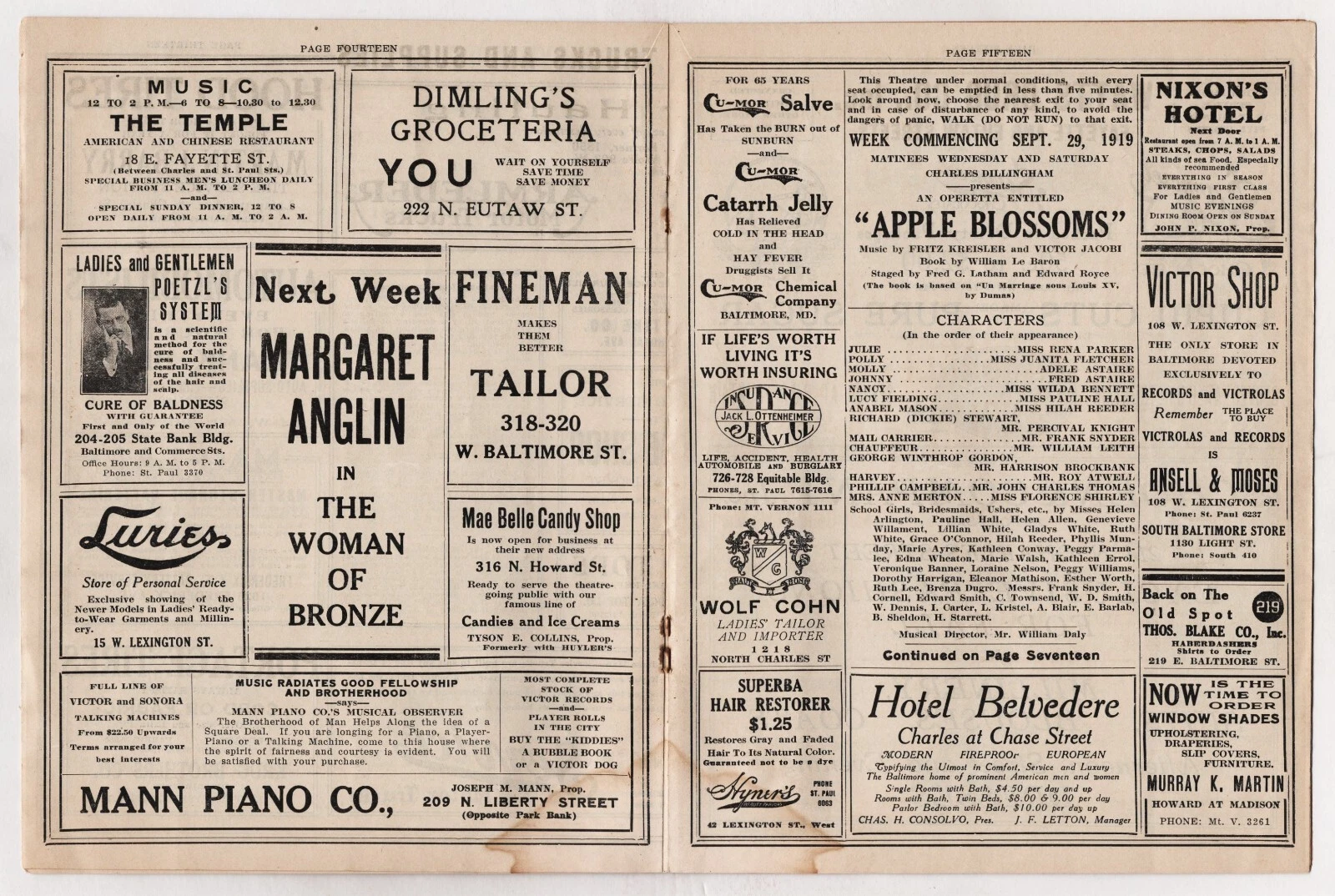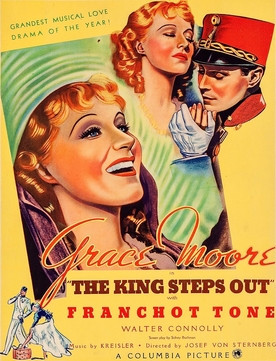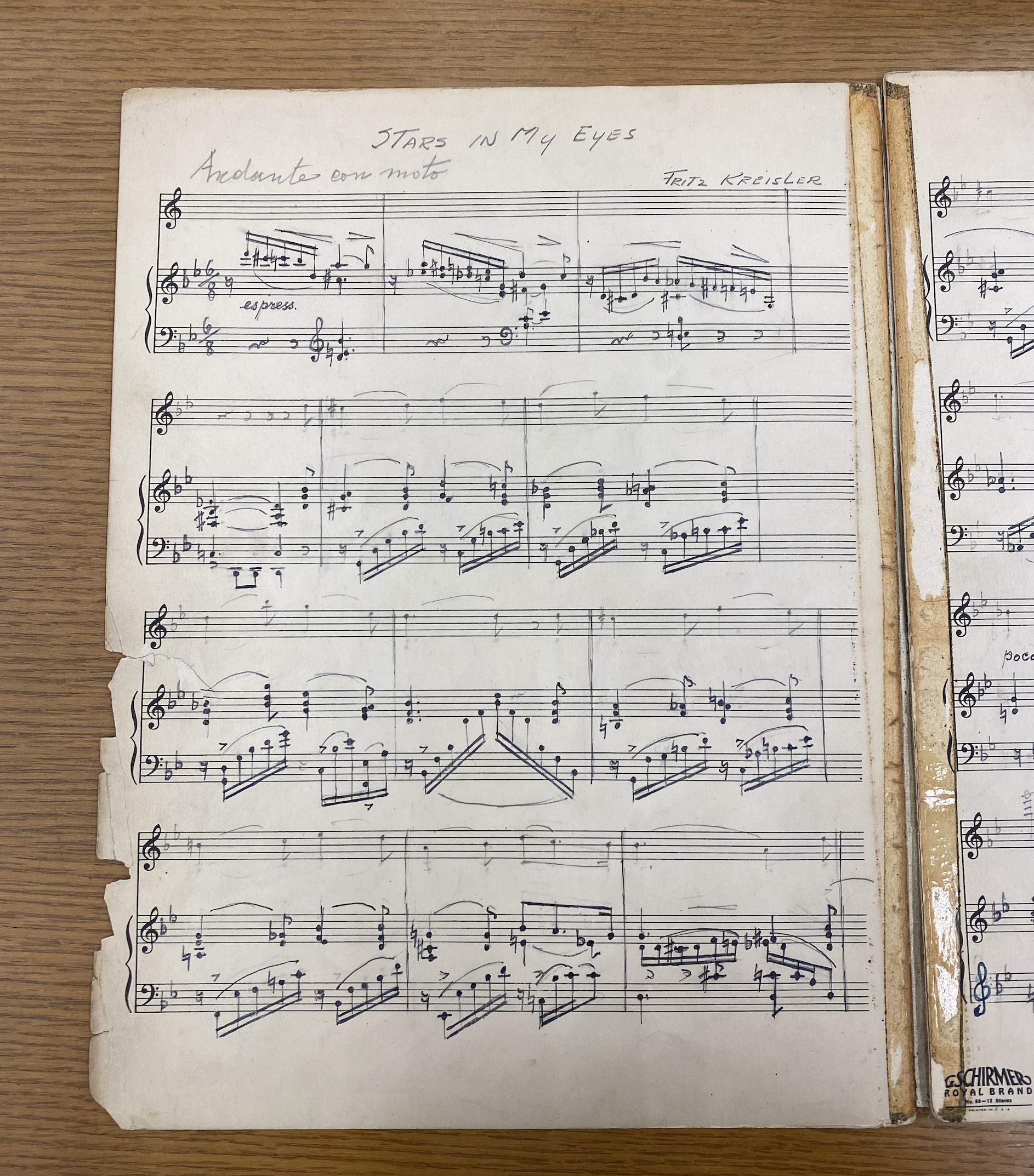Kreisleriana: Fritz Kreisler Rediscovered, Part 1
This year marks the 150th anniversary of Kreisler’s birthday. With that in mind I decided to work on a Kreisler recital of unpublished and rare works by Fritz Kreisler. It was actually a project many years in the making, and I thought I would share my work and thoughts into a series of posts.

Violinist Fritz Kreisler (1875-1962).
Amy Biancolli’s amazing (and sadly out of print) biography Fritz Kreisler Love’s Sorrow, Love’s Joy reframed Kreisler the artist for me. No longer was Kreisler just a name on a record or a piece of sheet music, but a person with his own failings just like anyone else. Her book was a wealth of information that put me on a mission to go to the Library of Congress to look through his papers. I spent hours….. let me correct that, I spent days going through the scores and treasures housed there. Biancolli’s appendix gave me a list of works that were both familiar and unfamiliar, pedestrian and shocking (more on that later).
There was one thing I wanted to understand, which was one of the pieces I had studied as a child. I wanted to confirm some of the notes in "Praeludium and Allegro." Studying Kreisler's papers didn’t help - it made it more confusing. The autograph deviates from the published score and actually is different in the Allegro.
As one of the "classical manuscripts" that Kreisler wrote but affixed the name Gaetano Pugnani, "Praeludium and Allegro" is one of the pieces that every young violinist wants to sink their teeth into. I defy any of you to name a piece - other than the Largo Espressivo in the Suzuki books - that has Pugnani’s name on it!
I always thought it was hilarious that the piece is entitled "Praeludium and Allegro," but the "allegro" section has a tempo of "allegro quasi moderato." As a student, I of course played the piece like it was PRESTO and certainly not moderato. Sadly, there is no recording of Kreisler playing this piece. According to the logs, he did try to record it but found all of his takes unsatisfactory. The piano part is exactly the same, but in the violin part Kreisler changes some of the notes here and there and adds a double stop or two, alternating them differently and then adding a run or two that I didn’t expect.
The great violinist Oscar Shumsky played this piece with Kreisler at the piano. Apparently, Kreisler rewrote the piano part on the spot with different harmonies and counter melodies. Such things must have been too easy for Kreisler.
In performing this original version, I kid you not, the hardest thing on earth was not lapsing into the published version. The manuscript didn’t seem heavily used, so I suspect there was another that was sent to the publisher with the final version. If it sounds like I’m playing it a little under tempo….it’s because I’m still trying to make sure what note is coming up next!
The other "original" piece that I performed in my recital was "Stars in my Eyes." I knew of the piece from the complete RCA cd set that I got from BMG. Kreisler recorded the piece late in his career with a studio orchestra, and of course it’s pure Kreisler. However, it, like all things Kreisler, has a longer story than just that. According to the notes, "Stars in my Eyes" is from his operetta Sissy, but the same song with different words featured in his musical Apple Blossoms under the title "Who Can Tell?" He recorded that with the Victor Orchestra in 1920.
The story of "Apple Blossoms" is interesting: Kreisler had served in the army for Austria during the "Great War" (1914-1918) as it was called (World War I for the rest of you) and after being wounded, he was demobilized. But sentiment for the great artist turned, and the American public that had adored him just years earlier now turned against him. Released from his contracts, he left the stage but still performed for fund raising events. To fill his time, he worked on a little musical - "Apple Blossoms." He wrote some of the songs, wrote some others with Victor Jacobi and still others were just the work of Jacobi. The show had a run from 1919 to 1920 (256 performances) and did well enough.
Of interest is the 1919 opening night cast. Fred Astaire and his sister Adele were in the cast as was Roy Atwell, who you have heard as the voice of Doc in Disney’s "Snow White and the Seven Dwarfs."
By 1932, Kreisler had written another operetta, this one called "Sissy, the Rose of Bararia Land." He took some of his famous Viennese violin melodies and made them into songs and took "Who Can Tell?" and made it into "Stars in my Eyes." The work never made its way to Broadway, but it was made into a musical comedy film in 1936 called "The King Steps Out."
It had a number of recordings - and by some big names like Joan Sutherland:
Kreisler recorded this with orchestra, but he also wrote out a piano and violin arrangement. Judging from the heavy use of this score, it must be assumed that from after 1932 he must have performed it quite often - if not in a program, then as an encore.
It is lovely, a fitting homage to the Vienna of his nostalgic youth. For my own performance, I did add some double stops in the last go around, as I felt Kreisler’s score was meant more for the pianist than it was for him.
I thank the Library of Congress for allowing me to sit there, Grace Kang for her help doing research and I thank my good friend Michelle Kim for working on these pieces with me.
I hope you enjoy our performance:
You might also like:
- Kreisleriana: Fritz Kreisler Rediscovered, Part 2: Bach Mozart and Beethoven Reductions
- Kreisleriana: Fritz Kreisler Rediscovered, Part 3: Rachmaninoff and Korngold arrangements
- Kreisleriana: Fritz Kreisler Rediscovered, Part 4: the unpublished 1943 La Campanella
* * *
Enjoying Violinist.com? Click here to sign up for our free, bi-weekly email newsletter. And if you've already signed up, please invite your friends! Thank you.
Replies
Thanks for your hard work, and thanks to Michelle too!
Wonderful project and thank you for your effort and playing!
Just a little sidenote, normally we wouldn't call Manuscript versions as "original version", since that presumes intent from the composer, and a MS can be a sketch or a working copy or whatever. So it is normally called Manuscript version :)
Thank you, and I really look forward to the next part :)
thank you for that! I will call it that from now on!
This article has been archived and is no longer accepting comments.
Violinist.com is made possible by...
International Violin Competition of Indianapolis
Violinist.com Holiday Gift Guide
Dimitri Musafia, Master Maker of Violin and Viola Cases
Johnson String Instrument/Carriage House Violins
Subscribe
Laurie's Books
Discover the best of Violinist.com in these collections of editor Laurie Niles' exclusive interviews.

Violinist.com Interviews Volume 1, with introduction by Hilary Hahn

Violinist.com Interviews Volume 2, with introduction by Rachel Barton Pine











August 13, 2025 at 01:11 AM · Wonderful! I've been an admirer of Kreisler as both a composer and performer ever since first encountering one of his recordings. I was also fortunate enough to find a used copy of his biography and I agree, it definitely made him come alive as a person and gave so much context to his music. Thank you for sharing this and look forward to any future posts!